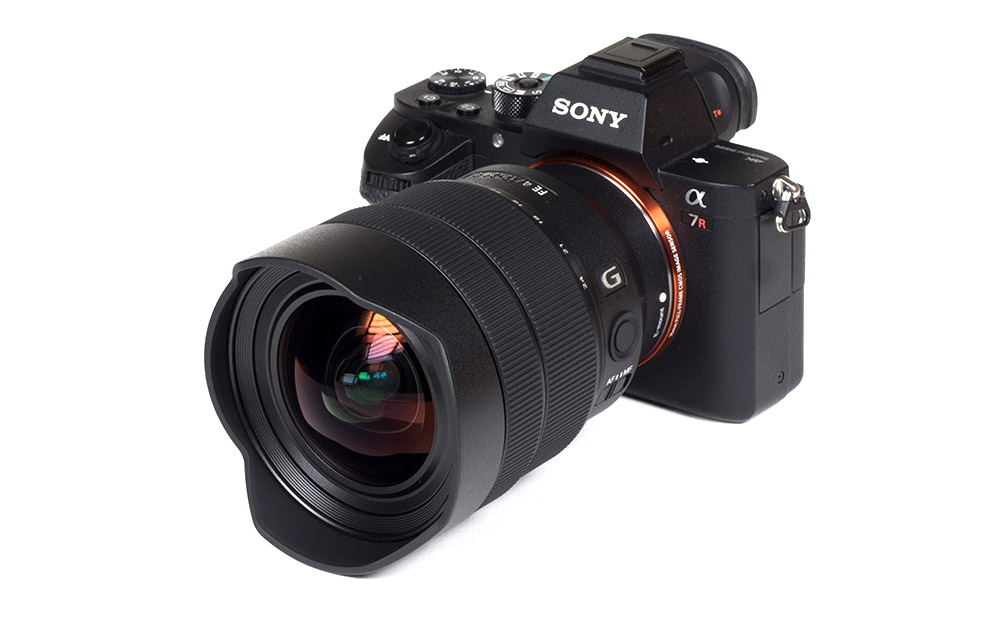by Klaus Schroiff, published September 2017
Introduction
The Sony FE system is quite blessed by many lens options these days. While the third-party gang hasn’t really started supporting the system, both Sony and its close ally Zeiss have been very busy beefing up the system lately. These days you also have several lenses to choose from in the ultra-wide segment. The latest and most extreme one is the Sony FE 12-24mm f/4 G. Being a G-class lens it is primarily targeting the semi-pro or “prosumer” market and it also means that you have to have fairly deep pockets regarding its price tag of 1700USD/2000EUR. While this may sound pricey, and in absolute terms it certainly is, it is just slightly more expensive than the Sigma 12-24mm f/4 HSM ART lens and much more affordable than the Canon EF 11-24mm f/4 USM L. Extremely wide zoom lenses are never cheap really. Compared to those two DSLR lenses, the Sony lens has one very obvious advantage – it is substantially more lightweight and compact. Thus it is fulfilling the mirrorless promise of providing smaller gear – something that we haven’t always seen in the past.
The build quality of the Sony G lens is very good indeed. The lens body is made of very high quality plastics based on a metal mount. Sony also used a dust and moisture resistant design which is good news for outdoor lovers. The physical length of the lens does not extend during focusing or zooming although an inner lens tube is moving within the limits of the fixed petal-shaped lens hood. Please note that the Sony FE 12-24mm f/4 G has a “bulb”-like front elements that are common in this lens class thus you can’t use front filters. Correspondingly the lens cap is also attached to the hood as you can see below. Both the zoom and focus ring operate smoothly. The new Nano AR Coating is supposed eliminate flare and ghosting – we tend to agree that it helps to reduce such issues.

The Sony lens uses a Direct Drive SSM for auto-focusing. It is silent, very fast and fairly smooth so that it is also feasible for getting used during movies (albeit most will prefer manual focusing in this case). Manual focusing works “by wire” thus you drive the focusing motor by turning the focus ring. However, the mechanism extremely precise and we certainly didn’t miss a mechanically-linked focus ring.
| Specifications | |
|---|---|
| Optical construction | 17 elements in 13 groups inc. 1xSuper-ED, 3x ED, 4x aspherical elements |
| Number of aperture blades | 7 (circular) |
| min. focus distance | 0.28m (1:7.1) |
| Dimensions | 87×117.4 mm |
| Weight | 565g |
| Filter size | – |
| Hood | built-in, petal-shaped, bayonet mount |
| Other features | Focus-hold button, weather sealing |
Distortion
As usual there are two sides of the story here when it comes to Sony mirrorless lenses – with activated or deactivated image auto-correction. With activated correction, the image distortions are generally moderate. They stay just below 1% barrel distortion at 12mm and beyond they are rather irrelevant.
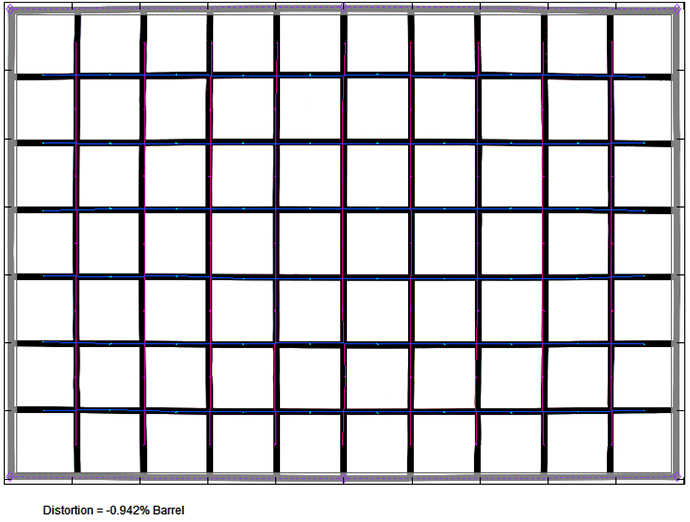
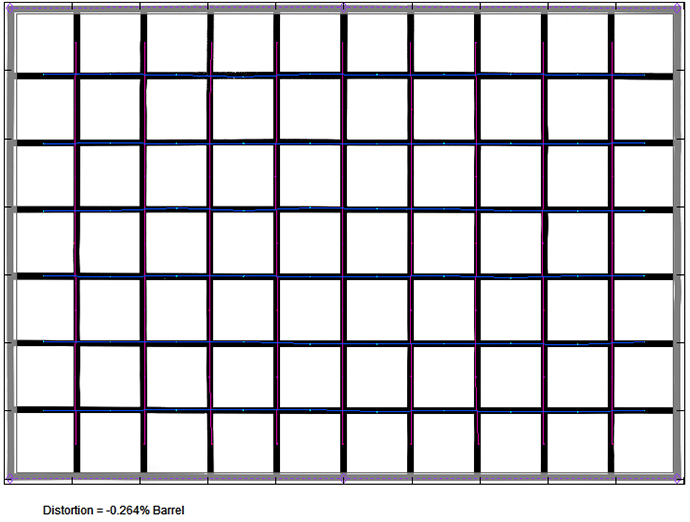
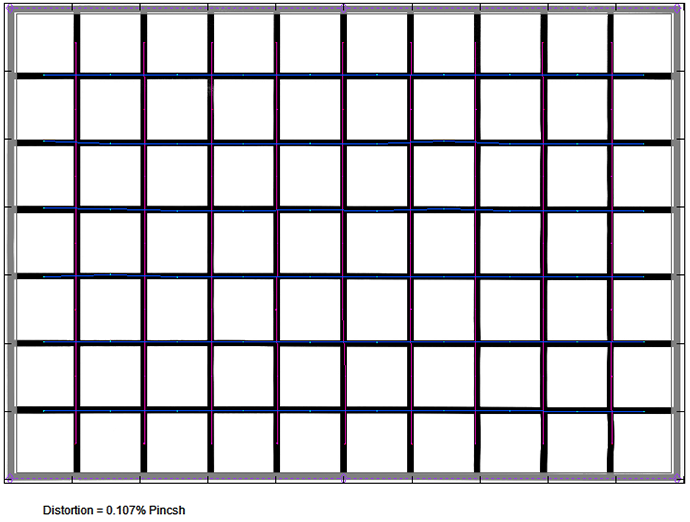

The situation changes when looking at the RAW distortions. At 12mm there are very strong barrel distortions of 3.8%. However, please note that this is in line with similar lenses in this class. The distortions are moderate at 14mm but increase again to medium (and less pleasant) pincushion distortions toward the long end of the zoom range.
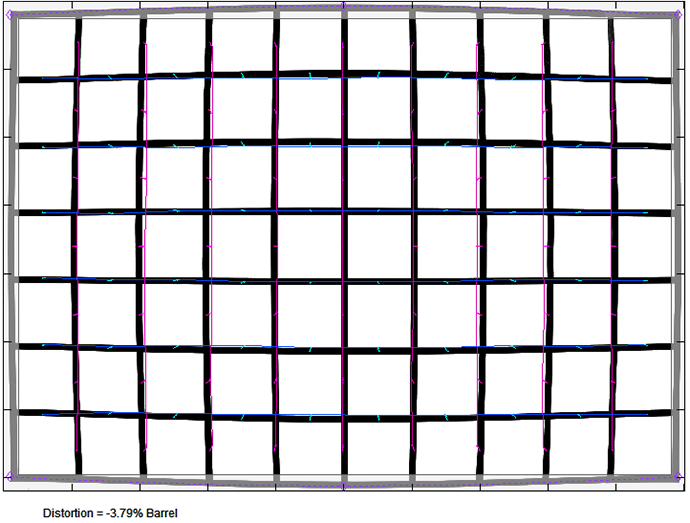
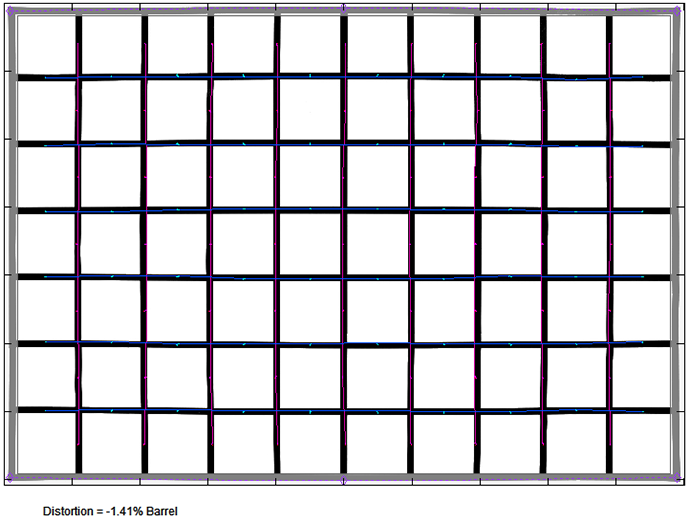
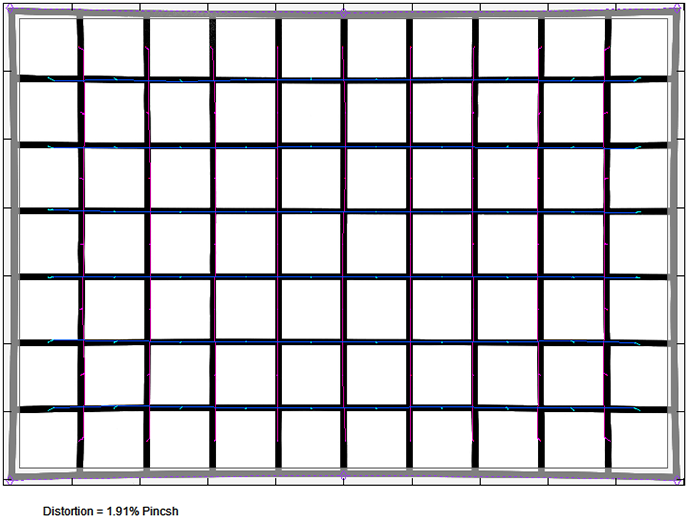

Vignetting
We have a similar story in terms of vignetting. With activated vignetting correction, the light falloff is reasonably well controlled for an ultra-wide lens. The vignetting is still easily visible at 12mm with a peak of 1.8EV (f-stops) at f/4 and the issue is only slightly reduced to 1.2EV when stopping down to f/11. The vignetting characteristic eases the more you zoom out. Please note that there’s always a certain degree of so-called “natural” vignetting with ultra-wide lenses so it unrealistic to expect zero vignetting anyway.
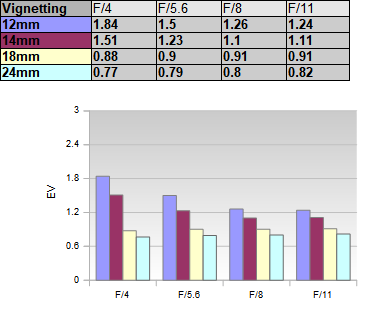
That being said, things aren’t so pleasant when looking at the RAW vignetting. It is quite extreme at 12mm & 14mm f/4 with a light falloff of more than 3EV (f-stops). Stopping down to f/11 doesn’t help too much (2EV). As expected it is a lesser issue at longer focal lengths, of course.
Thus generally it is a good idea to activate vignetting correction with this lens.
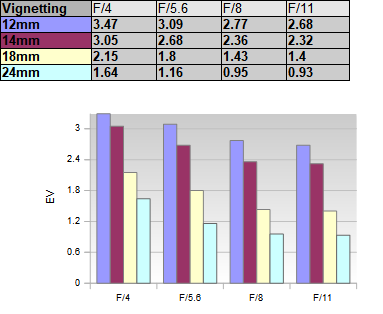
MTF (resolution)
High resolution sensors tend to be challenging for many lenses especially in the ultra-wide segment but the Sony FE 12-24mm f/4 G is capable of delivering very decent results. The center quality is outstanding at 12mm and large aperture settings. The border quality is also very good and the corners are managing to stay at least on a good level. The most extreme corner (just beyond what we define as corner which is already far out) is a tad soft though. You should avoid small apertures unless really needed because diffraction has already a strong impact at f/11. The performance is similar at 14mm. The sweet spot of the lens is reached at 18mm where the corners are seeing a boost to very good levels (just). Traditionally the “long” end is the weakest spot in an ultra-wide zoom lens. While the performance is somewhat reduced in this case, it remains on a quite high level from f/5.6 onward at least.
The centering quality of the tested sample was very good.
Please note that the MTF results are not directly comparable across the different systems!
Below is a simplified summary of the formal findings. The chart shows line widths per picture height (LW/PH) which can be taken as a measure of sharpness. If you want to know more about the MTF50 figures you may check out the corresponding Imatest Explanations.

Chromatic Aberrations (CAs)
The amount of lateral chromatic aberrations (color shadows at the image borders) is very good for a lens in this class. The average CA pixel width stays around the 1.2px mark in the 12-18mm range and increases only slightly at 24mm.

Sample Images
Competition
Among the mainstream offerings there are no alternatives that are as wide as the Sony FE 12-24mm f/4 G (to the left below). Natural in-house competitors are the new Sony FE 16-35mm f/2.8 GM (center below) – which is substantially more expensive – and the Sony/Zeiss 16-35mm f/4 OSS (to the right below) which is a very reasonable offering both in terms of quality and pricing.
If you like exotics, you may have a look at the Voigtlander prime lenses (10mm f/5.6, 12mm f/5.6, 15mm f/4.5). And there’s the quite awesome Zeiss Batis 18mm f/2.8 if 18mm are sufficient for your needs.

Visual comparison courtesy of camerasize.com.
The Sony FE 12-24mm f/4 G is a bit of a surprising lens in a couple of ways. Upon first contact, you will notice how small it is compared to similar (DSLR-)offerings. It's even more obvious in term of weight (565g vs 1150g for the Sigma 12-24mm f/4 HSM ART). Now you may expect that this comes with a couple of compromises but there are actually only a few. The resolution characteristic is very decent. It's already pretty good at f/4 (except at 24mm) and quite impressive between f/5.6 and f/8. At the wide end, you should avoid f/11 though. The quality is unusually harmonious across the focal length range. Lateral CAs as well as lens flare are also well controlled for such a lens. Vignetting is a bit of an issue though so you may prefer to take advantage of image auto-correction here. Image distortions are also less than perfect but they stay within the normal limits in this lens class.
The comparatively low weight has no real impact on the quality of the construction of the lens. It is built to professional standards including weather sealing. Sony followed the usual design principal of using a bulb-like front element thus you can't use front filters. Some users may not like the idea of a vulnerable front-element but please note that the fixed, built-in lens hood provides some protection at least. AF speed isn't really a major concern in an ultra-wide lens but Sony's DDSSM does a good and silent job here. Sony didn't implement an optical image stabilizer which we think was a good decision. Such lenses are very difficult to manufacture anyway and an OSS would have introduced additional complexity. Besides you can rely on Sony's in-camera image stabilizer anyway (in the current camera lineup at least).
A final word of caution - the Sony FE 12-24mm f/4 G is an extreme lens really. Such lenses are addictive, yes, but they are notoriously difficult to use at their widest settings. So before spending that much money just make sure that this is really what you need. However, if ultra-wide perspectives are simply your thing then the Sony is a no-brainer. Highly recommended!
-
Optical Quality
-
Build Quality
-
Price / Performance


